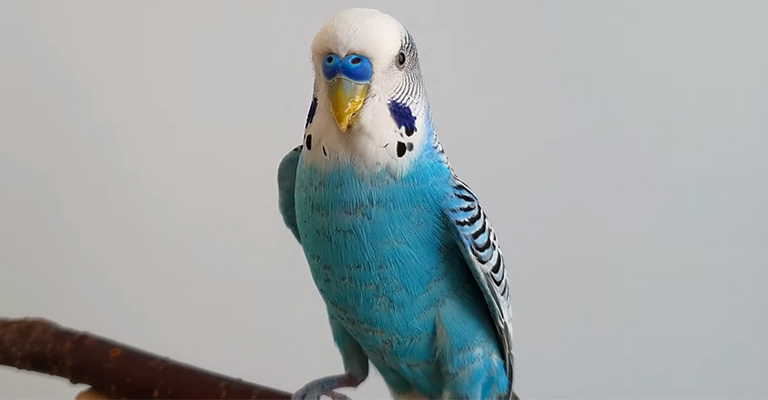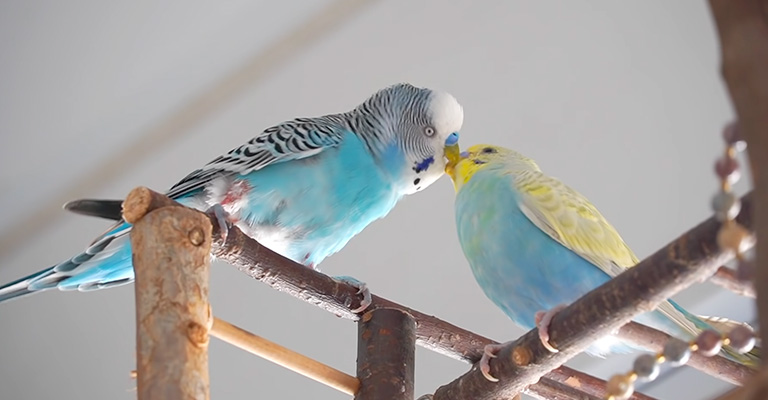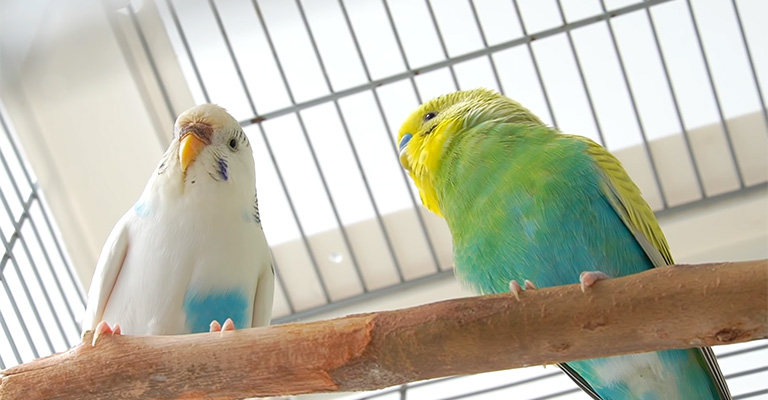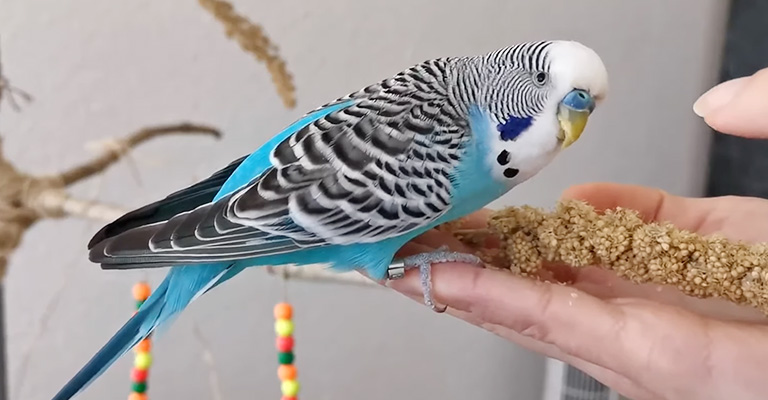Budgerigars, commonly known as budgies or parakeets, are small, colorful birds that captivate bird enthusiasts with their delightful antics and vibrant plumage. One curious behavior that often piques the interest of budgie owners and observers is their tendency to hold their wings up in a distinct manner.
This article will explore the reasons behind this intriguing behavior, shedding light on its various aspects and providing valuable insights into budgerigar behavior.

Why Do Budgies Hold Their Wings Up?
Budgies, or budgerigars or parakeets, are popular pet birds known for their charming personalities. One behavior commonly observed in budgies is holding their wings slightly elevated or away from their body. Here are nine reasons explaining why budgies hold their wings up:
Stretching
Budgies often hold their wings up to stretch their flight muscles. Extending their wings outward, they can exercise and loosen the muscles, promoting flexibility and maintaining muscle tone.
Heat Regulation
Holding their wings up can help budgies regulate their body temperature. Exposing the feathers and creating space between them allows air to circulate, helping dissipate excess heat and cool down.
Comfort and Relaxation

Budgies may hold their wings up when they are in a relaxed and content state. It could be a sign of comfort and a way for them to find a comfortable position to feel secure and at ease.
Sunbathing
Budgies are known to enjoy basking in the sun. Holding their wings up while perched near a sunny spot allows them to absorb warmth and natural sunlight, which benefits their overall well-being.
Communication and Display
Budgies use body language to communicate with one another. Holding their wings up can be a form of visual communication, indicating their mood or intention. It may serve as a display of dominance, readiness to mate, or simply a way to get attention.
Exploratory Behavior
When budgies are curious or investigating their surroundings, they may hold their wings up. This behavior can indicate their excitement or engagement with something new and exciting in their environment.
Preparing for Flight:

Budgies sometimes hold their wings up as they prepare to take flight. Extending their wings and preparing themselves for a quick takeoff when needed is an instinct.
Stretching Feather Muscles
Budgies hold their wings up to stretch the muscles around their feathers. Doing so maintains feather health and prevents them from becoming too tight or uncomfortable.
Physical Condition
In some cases, budgies may hold their wings up due to physical discomfort or health issues. It can signify injury, pain, or discomfort in the wings, shoulders, or back. If this behavior persists or is accompanied by other abnormal signs, it is essential to consult an avian veterinarian for a thorough examination.
How Do You Tell If Your Budgie’s Normal Wing-Raising Behavior Indicates a Health Issue?

Budgies hold their wings up for various reasons, such as aggression, excitement, or cooling down. Depending on the bird’s context and mood, this behavior can have different meanings and implications.
However, wing-raising can sometimes indicate a health issue, especially if other signs of discomfort or illness accompany it. Some of the possible
health issues that can cause wing-raising are:
Feather Cysts
These occur when a feather fails to break through the skin and grows beneath the surface, producing a lump on the budgie’s skin. The primary wing feathers are the most commonly affected ones. Feather cysts won’t disappear without surgical intervention.
Feather Loss
This can be due to moulting, parasites, self-plucking, French moult virus, or Psittacine Beak and Feather Disease. These are all severe conditions that require veterinary attention¹.
Feather Plucking:
This is a self-inflicted behavior that indicates an underlying health problem, such as parasites, an allergy, low air humidity, lack of fresh air, stress, boredom, mating hormones, liver disease, cancer, bacterial or fungal infection, malnutrition, heavy metal poisoning, or simply a bad habit. Feather plucking can be very difficult to diagnose and treat.
Avian Gastric Yeast (Agy) Infection:
This highly contagious infection impedes digestion and causes weight loss, undigested food in droppings, vomiting of food and mucus, and listlessness. AGY can be treated with drugs, but it may recur after some time.
Candidiasis
This yeast infection can affect any part of the budgie’s digestive system from the crop downwards. It causes a swollen crop, sour-smelling vomit, loose droppings, loss of balance, and shaking fits. Candidiasis can be cured with drugs that kill the bacteria.
Sour Crop
This condition is caused by a yeast infection that causes a swollen crop and sour-smelling vomit. It can be cured with drugs that kill the infection.
Sneezing
This is a symptom of a cold or similar virus in the budgie’s upper respiratory tract. It causes a runny nose or dried nasal discharge on the cere. Sneezing can be treated with antibiotics or antiviral drugs.
If your budgie is holding its wings up and showing any signs of illness, you should take it to a vet as soon as possible for diagnosis and treatment. You should also provide your budgie with a suitable environment, a balanced diet, and regular care to prevent diseases and parasites.
Frequently Asked Questions
The easiest way to tell the sex of a budgie is by looking at its core, which is the fleshy area above the beak where the nostrils are located. In adult budgies, males usually have a blue or purple cere, while females have a brown or beige cere. However, this can vary depending on the bird’s age, breed, and health.
Budgies can learn to talk, but not all of them will do so. Some factors influencing their ability and willingness to talk are their sex, personality, age, and environment. Males are more likely to talk than females; outgoing birds are more likely to talk than shy ones; young birds are more likely to learn than old ones, and solitary birds are likelier to mimic human speech than those with other bird companions.
Bonding with your budgie requires time, trust, and respect. You can bond with your budgie by spending quality time with it daily, talking to it softly and gently, offering it treats and toys, and letting it out of its cage for supervised playtime. You can also teach your budgie some tricks or commands to stimulate its intelligence and strengthen your bond.
Keeping your budgie healthy and happy requires a suitable environment, a balanced diet, and regular care. You should provide your budgie with a spacious cage with enough room for flying, perching, playing, and resting. It would help if you also equipped the cage with toys, swings, ladders, mirrors, bells, and other accessories to keep your budgie entertained and stimulated.
The lifespan of a budgie depends on several factors, such as its genetics, diet, health, care, and environment. In general, budgies can live up to 10 years in captivity, but some may live longer or shorter depending on their circumstances. To extend your budgie’s lifespan, you should provide it with a good quality of life that meets its physical and emotional needs.
Conclusion
Budgies are expressive birds that use their wings to communicate different emotions and needs. Observing their body language and vocalizations, you can understand what they are trying to tell you and how to respond accordingly.
Budgies hold their wings up for various reasons, such as aggression, excitement, or cooling down. Depending on the bird’s context and mood, this behavior can have different meanings and implications.
By knowing why budgies hold their wings up, you can better care for your feathered friend and enjoy a happy and healthy relationship with it.